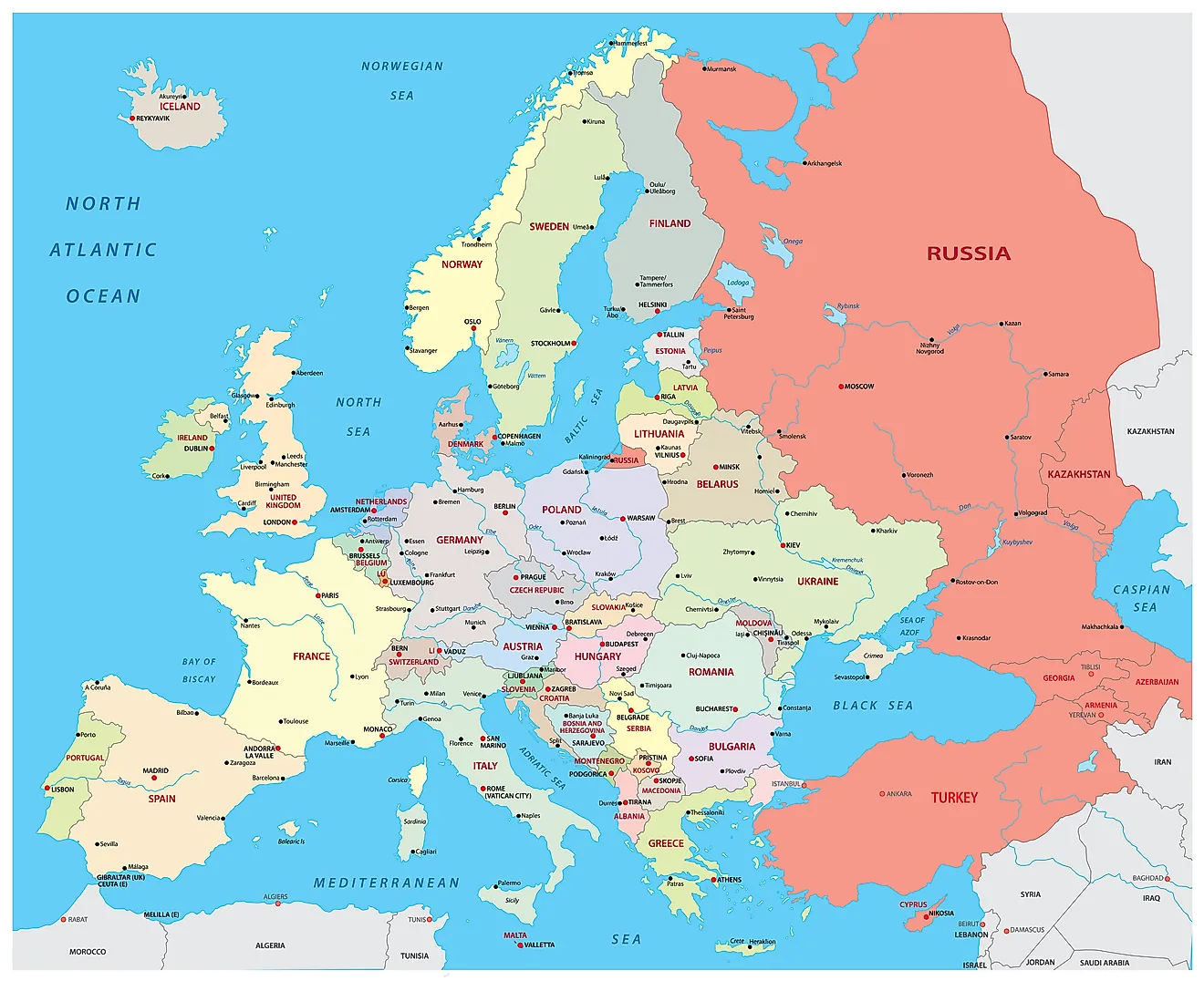
The Numbers Game: A Statistical Comparison of Europe’s Top Football Leagues
Football, often dubbed "the beautiful game," transcends mere athletic prowess; it is a complex tapestry woven with tactical brilliance, individual flair, and, increasingly, cold, hard data. While the passion ignited by a last-minute winner or a sublime piece of skill remains central, the analytical lens now offers unprecedented insight into the strengths, weaknesses, and unique characteristics of the world’s premier football competitions. Among these, Europe’s "Big Five" leagues – the English Premier League (PL), Spanish La Liga (LL), Italian Serie A (SA), German Bundesliga (BL), and French Ligue 1 (L1) – stand as epitomes of top-tier football, each boasting distinct identities shaped by history, culture, and a myriad of statistical trends.
This article delves into a comprehensive statistical comparison of these five titans, exploring key metrics that reveal their attacking prowess, defensive solidity, competitive balance, financial landscapes, and performance on the grand European stage. While raw numbers can sometimes obscure nuance, they provide an invaluable framework for understanding the evolving dynamics of modern football.
The Attacking Spectacle: Goals, Shots, and Offensive Output
When the ball hits the back of the net, it’s the most exhilarating moment in football. Analyzing goal-scoring metrics offers a direct insight into a league’s attacking philosophy and overall excitement.
Goals Per Game (GPG):
Historically, the Bundesliga often leads the pack in terms of goals per game. Its emphasis on high-intensity pressing, rapid transitions, and a more open, end-to-end style of play frequently results in higher scorelines. German teams tend to be less conservative, even when leading, fostering an environment where goals flow freely.
The Premier League consistently ranks high as well. Its frantic pace, emphasis on physical battles, and a multitude of teams capable of attacking prowess contribute to a healthy GPG. Matches are often characterized by relentless action, where tactical battles frequently give way to individual moments of brilliance and rapid counter-attacks.
La Liga, on the other hand, while featuring some of the world’s most prolific attackers, has historically exhibited a slightly lower GPG compared to the Bundesliga or Premier League. This often stems from a greater emphasis on tactical discipline, possession-based play, and meticulous build-up, which can lead to fewer chaotic attacking opportunities. Defenses in Spain are often well-drilled, making goals harder to come by, especially against mid-table and lower-ranked teams.
Serie A, long synonymous with catenaccio and defensive mastery, has undergone a significant transformation. While still appreciating defensive solidity, Italian football has embraced more attacking philosophies in recent years, leading to an increase in GPG. The league is shedding its old reputation, with teams now more willing to commit players forward and engage in more fluid attacking play.
Ligue 1 often sits at the lower end of the GPG spectrum among the Big Five. While Paris Saint-Germain (PSG) can inflate their individual goal statistics, the rest of the league frequently features more pragmatic, defensively cautious approaches, particularly in matches between mid-table and struggling teams.
Shots Per Game & Conversion Rate:
High GPG often correlates with high shots per game. The Bundesliga and Premier League generally see more shots attempted, reflecting their direct attacking styles. However, the conversion rate (goals per shot) can vary. A league with high shot volume but low conversion might indicate less clinical finishing or excellent goalkeeping. Conversely, a league with fewer shots but a high conversion rate suggests more precise, high-quality attacking opportunities. Statistical analysis often shows that the Premier League, despite its high shot volume, sometimes has a lower conversion rate than La Liga or Serie A, suggesting a higher number of speculative shots.
Defensive Resilience & Tactical Nuance
Defense is an art form, and statistics related to goals conceded, clean sheets, and even fouls can paint a picture of a league’s defensive philosophy.
Goals Conceded Per Game & Clean Sheets:
The Serie A, despite its recent attacking evolution, still boasts a strong defensive foundation. Teams are meticulously organized, and individual defending is often of the highest caliber. This translates to a relatively lower goals conceded per game average and a higher number of clean sheets, particularly for the top teams.
La Liga also emphasizes defensive solidity, with tactical discipline a hallmark of many Spanish sides. While the top teams like Real Madrid and Barcelona might concede more in high-scoring affairs, the overall league structure often prioritizes defensive shape and control.
The Premier League and Bundesliga, due to their open and aggressive attacking styles, tend to see higher numbers of goals conceded. The relentless pressing and quick transitions mean that defensive lines are often exposed, leading to more opportunities for opponents.
Fouls & Cards:
Interestingly, La Liga often registers a higher number of fouls and yellow cards per game. This can be attributed to the tactical nature of the league, where breaking up play through tactical fouls is a common strategy. The referees also tend to be stricter in their application of rules regarding dissent and tactical infringements.
The Premier League, despite its perceived physicality, sometimes has fewer fouls called, though it still sees a significant number of cards due to the intensity and pace of play. Serie A has seen a reduction in fouls as it has become more fluid, while the Bundesliga maintains a balance, reflecting its dynamic play. Ligue 1 often falls somewhere in the middle, with physicality playing a role.
Competitive Balance & Predictability
One of the most debated aspects of any league is its competitive balance. Is it a one-horse race, or can multiple teams genuinely contend for the title and European spots?
Title Race Predictability:
The Premier League is widely considered the most competitive at the summit. While a "Big Six" has emerged, the title race has seen multiple teams genuinely contend until the final weeks in many seasons. The financial muscle distributed across more clubs means that upsets are frequent, and the mid-table is often fiercely contested.
The Bundesliga and Ligue 1 have suffered from significant dominance by a single club: Bayern Munich in Germany and Paris Saint-Germain in France. This has led to concerns about predictability, with the title often decided long before the final matchday. While the fight for European spots and relegation can be intense, the top spot often feels predetermined.
La Liga has historically been a two- or three-horse race, primarily between Real Madrid, Barcelona, and occasionally Atlético Madrid. While these clashes are monumental, the gap between these giants and the rest of the league has often been substantial, leading to a more top-heavy competition.
Serie A has seen a refreshing shift towards greater unpredictability in recent seasons. After Juventus’s near-decade of dominance, the title has been won by different clubs, including Inter Milan, AC Milan, and Napoli. This has revitalized the league’s competitive appeal, making the title race genuinely open.
Points Gap & Relegation Battles:
The average points gap between the top team and the second, and the spread of points across the table, are key indicators. The Premier League typically has smaller points gaps at the top and a tighter race throughout the mid-table and bottom, making relegation battles equally thrilling. In contrast, the Bundesliga and Ligue 1 often show a significant points chasm between the dominant champions and the rest, though the battle for European qualification and survival remains intense.
Financial Clout & Global Reach
Money talks in modern football, influencing everything from transfer fees and wages to broadcasting deals and global marketing.
Revenue & Spending:
The Premier League is the undisputed financial powerhouse. Its massive global broadcasting deals, high commercial revenues, and strong matchday income allow English clubs to command the highest transfer fees and wages. This financial muscle enables them to attract top talent from across the globe and maintain unparalleled squad depth. Statistics consistently show the Premier League leading in net transfer spending.
La Liga holds a strong second position. Clubs like Real Madrid and Barcelona are global brands with immense revenue streams, though their financial models can sometimes be precarious. The league’s focus on structured financial control (like La Liga’s salary caps) aims to promote sustainability.
The Bundesliga operates on a healthier financial footing, often emphasizing sustainability and fan-friendly pricing. While not matching the PL’s spending power, German clubs are generally well-managed, with strong attendance figures and a focus on developing talent rather than solely buying it.
Serie A and Ligue 1 are making strides to catch up. Significant foreign investment in clubs like PSG, AC Milan, Inter Milan, and Marseille has boosted their financial capabilities, allowing them to compete for higher-profile players and improve infrastructure. However, the overall financial disparity with the Premier League remains considerable.
European Performance & Legacy
Ultimately, the true test of a league’s strength lies in its performance on the biggest stages: the UEFA Champions League and Europa League. The UEFA Coefficient, which ranks leagues based on their clubs’ performances in these competitions, is the most objective measure.
UEFA Coefficient:
Historically, La Liga dominated European competitions for over a decade, with Spanish clubs winning numerous Champions League and Europa League titles. Real Madrid’s unprecedented Champions League successes and Sevilla’s Europa League prowess cemented Spain’s top spot in the coefficient rankings.
The Premier League has enjoyed a significant resurgence in recent years, with multiple English clubs reaching Champions League and Europa League finals and winning both competitions. This has seen England consistently challenge or even surpass Spain in the coefficient rankings, reflecting the league’s growing depth and quality.
The Bundesliga has consistently maintained a strong presence in the latter stages of European competitions, with Bayern Munich being a perennial contender. While not as dominant as Spain or England in terms of overall titles, German clubs are reliable performers.
Serie A has shown promising signs of a comeback, with Italian clubs reaching European finals more regularly. This reflects the tactical evolution and increased investment in the league.
Ligue 1, despite PSG’s individual efforts, has struggled to consistently translate domestic success into European glory. French clubs often face a significant hurdle when competing against the financial and squad depth of their English, Spanish, German, and now increasingly Italian counterparts.
Player Development & Tactical Trends
Beyond raw performance, statistics also reveal tendencies in player development and prevailing tactical trends.
Average Squad Age & Academy Products:
The Bundesliga and Ligue 1 often feature younger average squad ages, acting as crucial proving grounds for emerging talent. Clubs in these leagues frequently scout and develop young players, who then move to the wealthier leagues for higher fees. Data on academy graduates playing first-team minutes often highlight the strength of youth systems in Germany and France.
The Premier League and La Liga, with their financial muscle, tend to attract more established, experienced players, leading to slightly older average squad ages, though youth development remains important for top clubs.
Passing Accuracy & Possession:
La Liga traditionally leads in metrics like passing accuracy and average possession, reflecting its emphasis on technical control and patient build-up play. Teams are often judged on their ability to retain the ball and dictate the tempo.
The Premier League often shows lower possession percentages for many teams, indicative of its more direct, transitional play. However, top clubs like Manchester City and Liverpool also excel in possession-based football, showing the league’s tactical diversity.
Conclusion: A Symphony of Styles
A statistical comparison of Europe’s top football leagues reveals a captivating mosaic of styles, strengths, and unique challenges. There is no single "best" league; rather, each offers a distinct flavor of the beautiful game.
The Premier League stands out for its unparalleled financial power, competitive depth, and relentless, high-octane action. The Bundesliga impresses with its high goal output, sustainable financial model, and vibrant fan culture. La Liga remains a bastion of technical excellence, tactical discipline, and historical European dominance. Serie A is experiencing a compelling renaissance, blending its defensive heritage with newfound attacking flair and a more open title race. Ligue 1, while often overshadowed by PSG, serves as a vital talent factory and provides a platform for gritty, competitive football.
As football continues to evolve, driven by analytics, financial power, and global appeal, these statistical trends will shift and reshape. Yet, the underlying identities of these great leagues, forged over decades, will continue to define them, ensuring that the European football landscape remains a rich and endlessly fascinating subject for fans and analysts alike. The numbers, in their eloquent silence, tell a story of diverse approaches to achieving footballing glory, each contributing to the sport’s universal allure.



